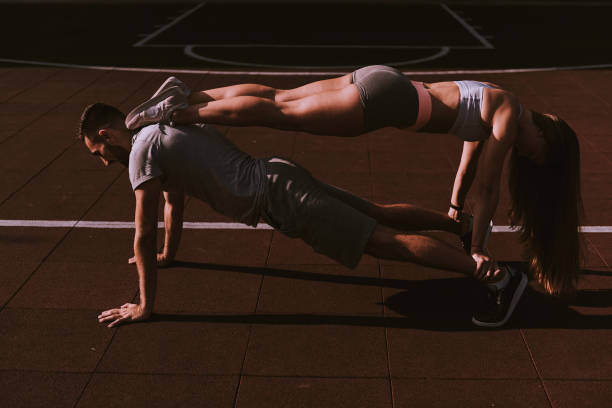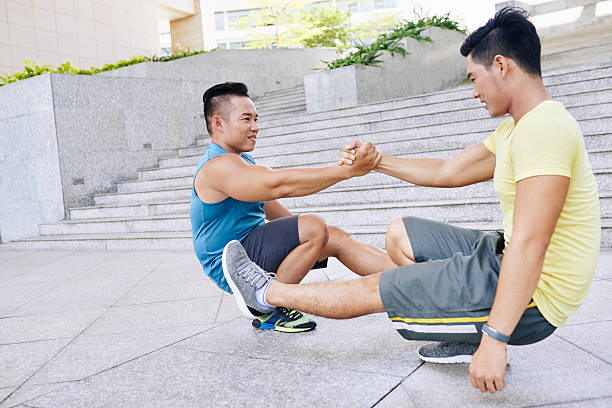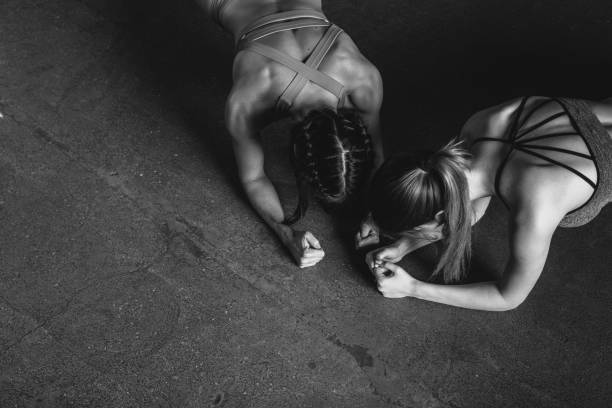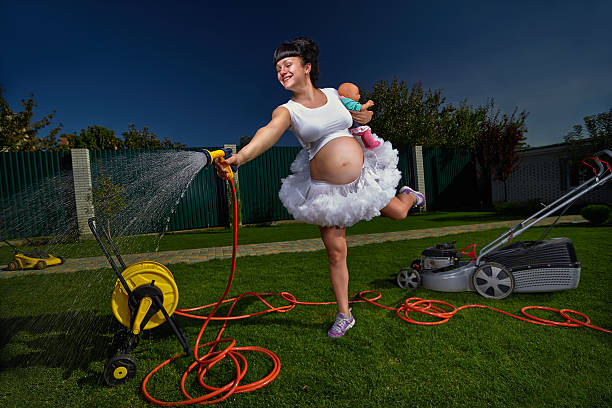Core stability training: What are core muscles?

Core stability training is essential for everyone to improve functionality in day to day activities and staying away from injuries. You often heard personal trainers saying: “engage your core!” This is when most people are confused. “I have a solid six packs, and i can feel it. Isn’t it engaged enough?”
“Six pack abs are just part of the core muscle group, they are not the main core stabilisers.”
Lets make it simple. The meaning of the word “core” means the foundation and central part of something. It describes the most essential, basic and important part of any system.
“A strong core is best described as a building built on a strong foundation. A house built on a soft ground with a weak structure can be a disaster” says senior personal trainer Sean Lee, PT works.
Imagine a high horse-power race car driven by a lousy driver. It will end up in a crash due to the lack of control and basic driving skills of the driver. Same goes to our muscular system. It is important to build a strong core foundation to help in our daily gym workouts.
What are core muscles made up of?

Our body’s core strength is made up of a group of both external and internal deep muscles around the mid-section (trunk). Its basically muscles wrapping around the spine to keep our trunk area stable and firm in all kinds of position.
It is a complex group of muscles that acts as a stabiliser rather than a prime mover. It acts as a force activation center that links upper and lower limbs together in a 3 dimensional action.
Where are core muscles located and its functions.

Rectus abdominis – also known as abs, the one in which you feel the most when doing crunches or sit-ups. Helps your body to curl forward.
External and internal obliques – located at the sides of the waist, involve in twisting trunk movements.
Erector spinae – also known as back extensors, running along the back of the spine. Helps your body to bend backward.
Transverse abdominis – deep layers of muscles that wraps around the spine. It acts like a weight lifting belt that supports your posture. It engages when we breath deeply. It kicks in naturally when someone pushes you.
Pelvic floor muscles – a thick layer at the base that supports internal organs. It kicks in when we try to control our bladder and bowels.
Multifidus – thin strips of muscles that attaches to the vertebrae, helps to stabilise spinal joints.
Quadratus lumborum (QL) – located at the lower back on the sides. It helps you to bend sideways.
Intercostal muscles – muscles in between the ribcage. Helps in breathing.
Diaphragm – thin dome shaped muscle that separates the abdominal area from the chest. Used in breathing process.
How to build stronger core muscles?

These above muscles synergise each other, enabling your body to bend side to side, rotate left to right and bend forward and backwards. Basically, it kicks in the moment when you move.
Some fitness coaches often associate muscles around the hips and upper body with “core”. They are the lats, trapezius, serratus anterior, gluteus, piriformis, hip flexors and iliopsoas. These “nearby” muscles helps to further stabilise our “core” as they work together in harmony.
“Abs training without working the hip muscles (gluteus) is useless.” says Clement Tan, exercise rehab specialist, PT works.
The core and surrounding muscles must be trained to fire together, connecting with each other properly, to improve body functionality for day to day activities.
Yet, a lot of people are still focus on training solely on their abs, isolating just the rectus abdominis (doing lots of sit-ups, crunches, back extensions and legs raises). Yes, it is not wrong, but it could be better.
As we have mentioned earlier on, core does not function as a prime mover but a stabiliser to link the forces together. So no point doing too much crunches that only involves a single action.
Instead, one should focus on core functional exercises like overhead squats, deadlifts, push ups and other multi-plane closed chained exercises. We must look at core strength as the ability to control muscular forces with respect to stability and balance.
Difference between core and abs muscle.

A lot of us mistaken “core” as abdominal muscles (six-packs), also known as rectus abdominis. Being muscular and lean doesn’t mean that your mid section is strong.
“Having a chiseled 6 packs is over-rated in terms of functional core strength”
In the old days, doing 200 sit-ups daily is impressive. The truth is, your hips flexors are doing the most work for sit-ups, not your deep transverse abdominals. Even doing 1000 crunches does not work. Doing tons of these neglects the other surrounding muscles.
Try to look at core training from 3 different planes. It must involve movements from all directions. Core is made up of inner and outer muscles while abs are just the outer part. These inner layers of muscles helps to support your spine, helping you to stand tall.
To get that “wash board” abs is pretty easy. You just need to have a good diet plan and burn lots of calories. But to “turn on” your deep core stabilisers is a challenging task. It is something that you cannot see but feel.
How to activate your core muscles during training?

There are a few simple ways:
Activate your abs: You can activate it by flexing your abs. Ask someone to lightly hit your stomach area, its a natural response!
Hollowing method: Contract your pelvic floor muscles (the muscles that helps to control your bladder) and draw your belly button towards your tummy.
Using your fingers to feel the belly wall: Ideally, you should be able to feel the tension under your fingers if your core is activated.
Get someone to give you a light push: Stand upright with a good posture. Allow someone to give you a push on your shoulders. Your deep core muscles will kicks in naturally.
Important Tip to take note! Try to activate your core when you are lifting weights or executing any movements. It must be “turned on” at all times during training!
Basic core exercises to improve overall body strength.
1.Push ups
Yes. To do a good standard push-up is not easy. Make sure your chest , hips and knees are in a straight line. Maintain your spine is neutral at all times, moving the body as a single unit up and down. Focus on form, not reps!
2. Plank
Make sure your chest, hips and knees are aligned at the same level. No hunching of the upper back. Keep your lower back flat without over-arching. Elbows are located just below the shoulders. Look at the floor and tuck your chin in.
3. Side plank
Chest up, with your elbows located under the shoulder. Keep your spine alignment straight horizontally.
4. High plank
Maintaining in a push up position. Do not drop your hips. Keep it tight and hold it for as long as you can.
5. Reverse crunch
Lie down position and with leg raised, knee 90 degree bend. Make sure you drive your lumbar spine (arch on the lower back) towards the floor, making it flat.
6. Jack knife
7. Dead bug
8. Cable wood chops
9. Body saw using a foam roller
10. Alternating leg raises
11. Core wheel roll out
12. Bridging
Above are some of the basic bodyweight core exercises you can try. Once you get stronger, we can move on to more advance stuffs using dumb-bells, TRX and kettlebells.
Benefits of having a strong core.

- Increases muscle stability and balance, hence improving functional movement and sports performance.
- Helps to improve overall body strength especially lower body- ability to squat heavier weights!
- Protects the spine and surrounding musculature.
- Strengthens the lower back, less prone to injuries.
- Helps to develop explosive power during sprinting, jumping etc.
- Reduce lower back pain especially for hyper-extended hips.
- Helps in slipped discs patients, reduce nerve impingement.
- Improves overall posture, correcting hip mis-alignment.
- Ability to “suck” in your bulging tummy.
- Gives you the solid “six pack” without you even noticing!
Join us to experience our advance core workout program!
